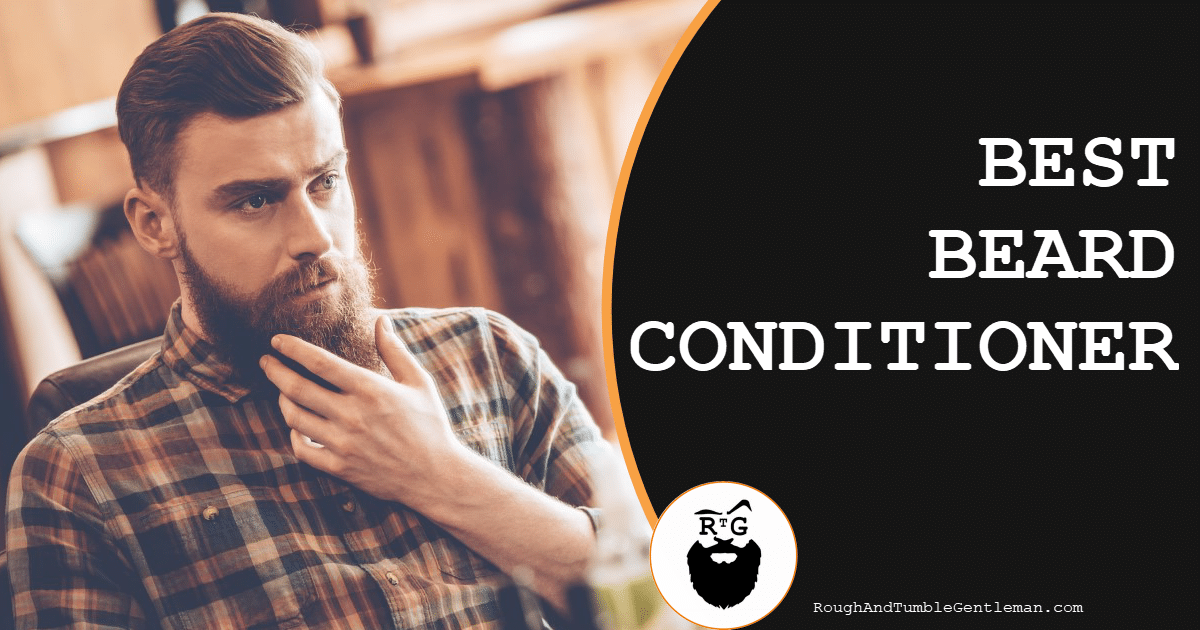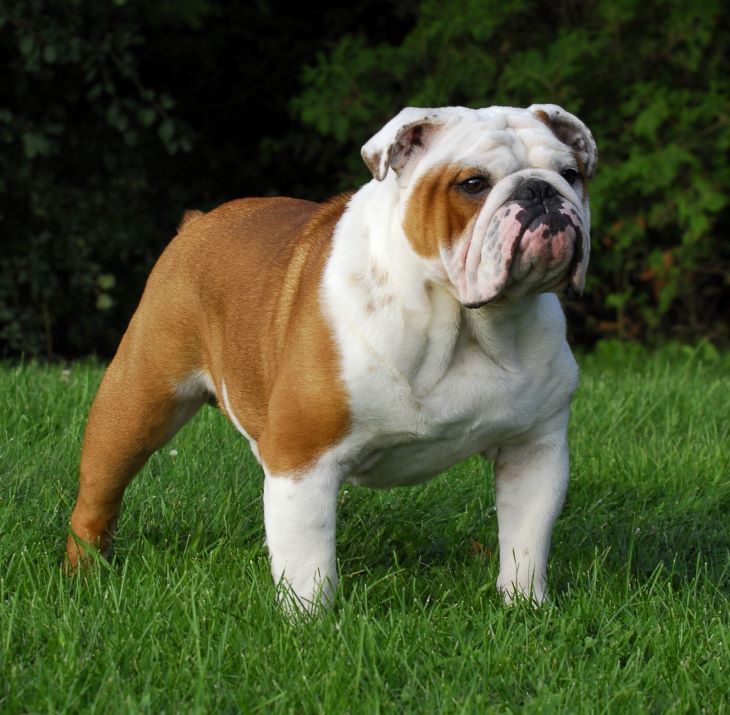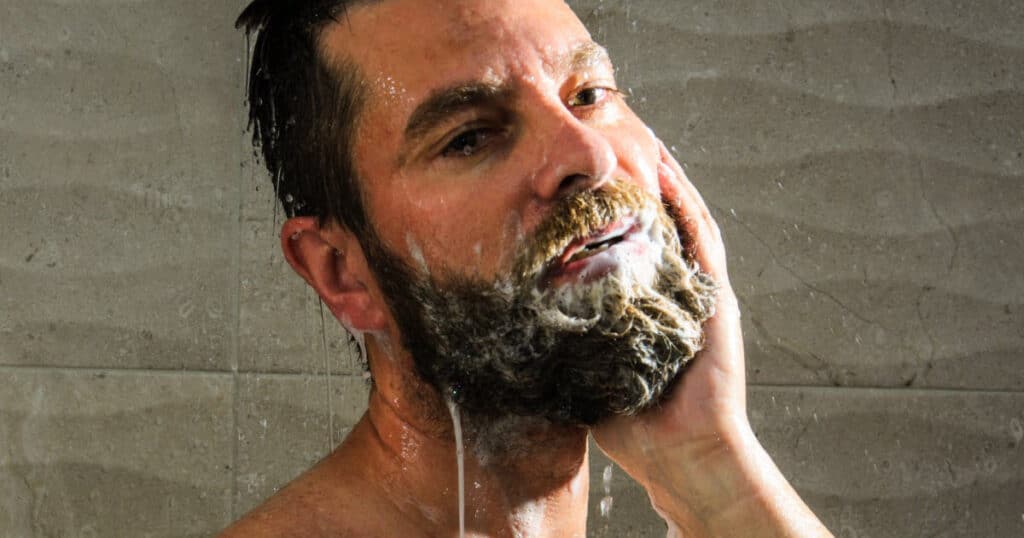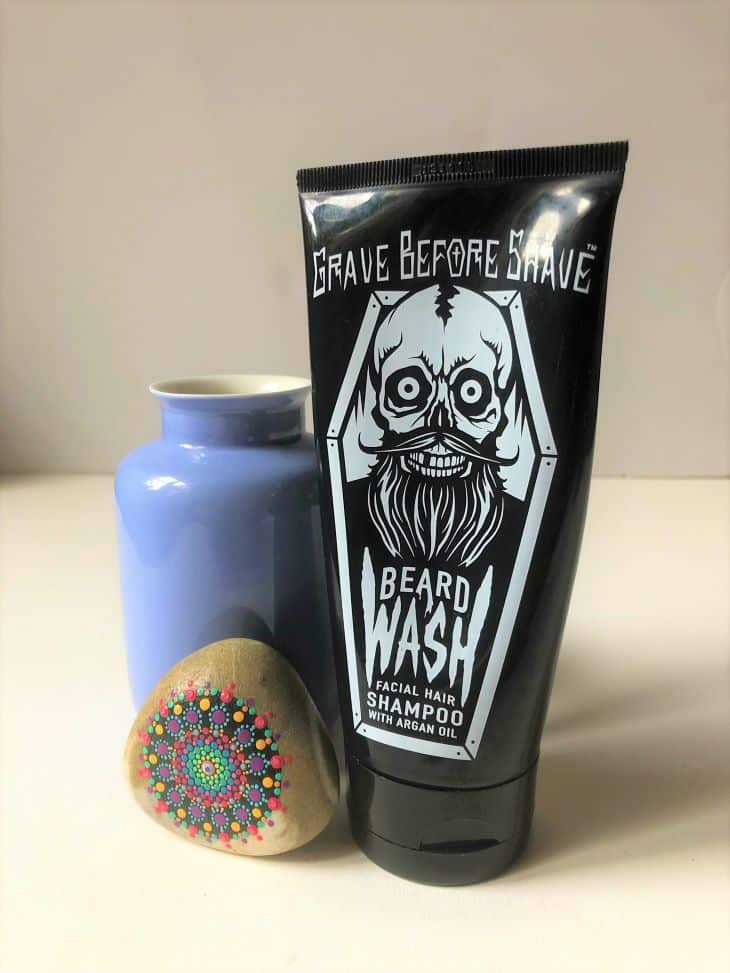Most of us would never go a week without shampooing and conditioning our hair, but there are many among us who will go a week without shampooing and conditioning our beards, and not think twice about it. That’s not ideal, because beards usually require a little TLC, and an improperly groomed beard can become unruly (at best) and stinky (at worst). Washing your beard is important, but conditioning is just as important, and often gets overlooked.
Below, we’ll go deep on beard conditioners. We’ll describe what they do and list our picks for best beard conditioner, and then we’ll go into more detail and talk about why conditioners are important, how they differ from other beard products (namely, oils, balms, and waxes), and how they interact with other beard products. We’ll start at the beginning:

What Does a Beard Conditioner Do?
A good beard conditioner should do the following five things for your facial hair:
It Should Soften Your Whiskers. This is one of the most important benefits of a beard conditioner: it can make a thick, bristly beard soft and pleasant to the touch. Left on its own, a beard will become bushy, dry, and pointy, and that’s true for beards of all lengths. Conditioner softens the whiskers a little bit, makes them a little more pliable, and inhibits split ends and bunching.
It Should Relieve Itchiness. For many men, having a beard is an irritation-free endeavor. They’re able to grow big bushy beards, and it’s a pleasant, comforting process. For other men, though, growing a beard—particularly the first half-inch or so—can be a torturous, itchy affair. And, for some particularly unlucky guys, beard hair itches regardless of how long it grows. For those men, beard conditioner can help. It’s designed to soothe the skin, make those whiskers a little less menacing, and provide a little more comfort as the beard whiskers grow in.
It Should Hydrate Your Facial Hair. With just a little bit of maintenance, a beard can be a bold, beautiful statement about your masculinity. Without any maintenance, a beard can be a dry, crinkly disaster, full of split ends and regret. Whiskers—especially longer whiskers—need hydration to grow and remain healthy, and conditioner provides moisturizing properties, especially when used once or twice a week.
It Should Provide Nutrients. This varies from product to product, but many conditioners contain Vitamin E (which is an antioxidant believed to stimulate hair growth and relieve oxidative stress on hair follicles), aloe vera (which can provide soothing relief to itchy, flaky skin), argan oil (which is believed to deep-clean the pores in your skin), and a bunch of other compounds that contribute to beard health. And, finally…
It Should Detangle Knots. This is actually a very important part of the job, because beard shampoo can actually make your beard a little knotty. When conditioner hydrates your whiskers, they can bend and flex and move more freely, and that allows them to untangle when you run a comb through them. If you’ve ever tried to run a beard brush through a beard that’s not ready to be brushed, you know that it’s a very difficult (and painful!) thing to do. Conditioner makes a beard nice and groomable.
It may seem simple, but that’s actually a lot! Conditioners provide a range of benefits, and we’ll discuss each of these five attributes in the products we review below. Before we get to the reviews, though, let’s quickly discuss one of the most important distinctions about beard conditioners:

There are Two Different Types of Beard Conditioners
There’s a lot of confusion about what a beard conditioner actually is, but the general idea is that there are two types of beard conditioners:
Conditioners You Apply and Then Rinse Out. These are a little bit like the conditioners you’d use for the hair on your head: your work it into your whiskers, let it sit for a few seconds to a few minutes, and then rinse it out. A lot of guys use a rinse-out beard conditioner when they’re in the shower—they’ll do their regular shower routine, use a beard shampoo and rinse that out, and then use a beard conditioner, and rinse that out—and they’re good to go. Other guys skip the shower and wash their beard at a sink, rinse it, and then work the beard conditioner into their whiskers, and then rinse it all out.
Conditioners You Apply and Then Leave In. These are conditioners that you work into your beard after you wash it, and then leave it in your whiskers for the remainder of the day. Leave-in conditioners are very popular, and the companies that make them usually incorporate a scent into the mix, and there are a LOT of scents you can choose from. These beard conditioners are similar to beard balm, but they’re a little thinner, and they don’t have the same “hold” properties that balms have (and, if you’re interested in learning more about the differences between conditioners and balms, we’ll go into more detail in one of the sections below).
Most conditioners fall into those two camps. You may occasionally see a product labelled as a “beard softener,” and those are usually conditioners that you apply and then rinse out of your beard, but those are kind of rare.
The Best Beard Conditioner: Our Top Picks
To make things easier, we’ll split our reviews into two different sections: beard conditioners you use in the shower and then rinse out, and then conditioners you’d apply to your beard after your shower and leave in all day long.
In-Shower Conditioners You Rinse Out
There are three in-shower conditioners we like:
Bossman Fortify Beard Conditioner
We’re a big fan of Bossman products, and we’re seeing them more and more often. We think their Bossman Fortify Beard Conditioner is a great option, and does a great job of moisturizing beards. It’s meant to be used twice a week when you’re in the shower, and it looks like a regular bottle of conditioner. It’s made specifically for beards, though, and can make managing your beard post-shower a lot easier.
The only complaint we have about the product is that the names of the conditioners don’t really tell you what the scent of the product is. Bossman Fortify is made in three varieties: Gold, Hammer, and Magic. You probably can’t really imagine what “Hammer” smells like—metal-ish?—so here’s how it breaks down:
Gold is a lemon-y smell—it’s light and bright and has a little lavender in it; Hammer is a little more difficult to describe, but it has lavender, vanilla, geranium oil, and a little dash of patchouli, and smells unique and appealing (to us, anyway); and Magic has more of a traditional sandalwood smell that’s associated with a lot of shaving products.
So the names are a little confusing, but that’s more of a marketing issue—the scents themselves are fantastic, and the conditioner does a great job untangling and fortifying our beards.
Scotch Porter Conditioner
The Scotch Porter Beard Conditioner is another great option. It’s got a long list of natural ingredients you’d expect—coconut oil, argan oil, and jojoba oil—but it also has a lot of natural ingredients you won’t find in many other conditioners (including marshmallow root, chamomile flower, and slippery elm bark), and it doesn’t include many of the items known to irritate the skin (parabens, silicones, artificial colors, etc.). Plus, it’s got some fantastic add-ons (Vitamin B-5 is one) and in our experience, does a great job of smoothing beard hair and making it frizz-free. It looks like there was a LOT of thought that went into the development of this product, and that makes it stand out, because a lot of beard products are made out of pretty much the same ingredients.
Scotch Porter also offers a beard kit that packages a bunch of their products together (the Scotch Porter Beard Collection), and it includes beard wash, beard conditioner, beard serum (aka
Zeus Beard Shampoo and Beard Conditioner Set
We’ve written a lot about Zeus products on Rough and Tumble Gentleman, and we think the Zeus Beard Shampoo and Beard Conditioner is a great one-two punch when it comes to cleansing your beard. The shampoo features essential oils, carrier oils, and antioxidants and cleanses effectively, and the conditioner is packed with unique ingredients including:
Jojoba oil and avocado oil, to soften and moisturize the whiskers in your beard;
Vitamin B5 and aloe vera, to fortify and soothe the skin; and
Dragon blood, to moisturize the skin and protect it.
Yes, Dragon Blood is a thing, and it sounds pretty hard core, but it’s actually an extract taken from palm trees and it’s believed to reduce inflammation, so it’s good for your skin and not, obviously, the blood of dragons. Bummer.
As far as scents go, Zeus has all the “classics” covered—they manufacture the product in sandalwood (our personal favorite of ours), vanilla rum (another personal favorite of ours), and verbena lime (which is, somehow, also another personal favorite of ours).
If you’re not interested in the shampoo, the stand-alone Zeus Beard Conditioner is also an option. It’s also manufactured in sandalwood, vanilla run, and verbena lime. A very good option from a company we like a lot.
Leave-In Beard Conditioners You Wear All Day
There are three leave-in conditioners that we like, and they are:
Zeus Conditioning Beard Balm
We’ve found that the Zeus Conditioning Beard Balm does a great job of making beard hair softer and more manageable, while at the same time offering a little bit of hold. It includes beeswax and candelilla wax, and that can help you tame some fly-aways and introduce a little structure into your beard.
It’s also got some ingredients that are good for your skin. One of the great things about a leave-in conditioner is that it can help prevent some of the itching that comes with having a beard (particularly at those earlier stages of a beard, where the whiskers are short enough to curl up and irritate the skin). Zeus Beard Balm includes shea butter and aloe vera, and although your results may vary—everyone’s skin reacts differently to different products—those ingredients are included to cut down on that itch a little.
Zeus loooooves that verbena lime scent, and most of their products come in some variation of it—it’s one of Zeus’s calling cards. So their leave-in conditioner is manufactured with a verbena lime scent, a sandalwood scent (a classic shaving scent), and an unscented variety, which we think is a good move on their part. Most shaving products incorporate some kind of scent, and when you use multiple products—let’s say you shower and use a beard shampoo, and then you get out and use a leave-in conditioner, and then maybe later in the day you add some
Honest Amish Beard Balm Leave-in Conditioner
If we don’t list at least one Honest Amish product, we haven’t done our job right, so we’ve got to include the Honest Amish Beard Balm Leave-in Conditioner. If it’s not the best beard conditioner, it’s certainly high on the list.
Honest Amish is kind of the original gangsta of beard products, and they enjoy a lot of name recognition. And for good reason—we’ve found their beard conditioner to pretty reliable. It makes whiskers a little silkier, while at the same time introducing a little bit of structure and hold. It can be difficult for one product to achieve those two very different tasks, but Honest Amish seems capable.
If you talk to people who are really into beards and beard care, you’ll find that they have a hard time describing the scent of Honest Amish products. We do, too. It’s pleasant, for sure, and very unique, but really hard to describe. Some people note licorice, sandalwood, and honey, and those seem right—but still, it’s difficult to describe. It’s mild, at any rate, and it has a natural scent. Another great option.
Smooth Viking Beard Conditioner
First things first: “Smooth Viking” is a fantastic name for a beard care product. It evokes the image of a well-groomed Viking—manly, but presentable—rather than a Viking with a great beard who seems very manly, but who’s kind of let himself go a bit. It’s almost as good a name as “Grave Before Shave,” which is another company we like a lot.
At any rate. The Smooth Viking Beard Conditioner can be a good choice. It’s got many of the natural ingredients we’d hope for in a balm (shea butter, argan oil, avocado oil, sweet almond oil), and it’s got some appreciable styling power. It’s not meant for an extremely strong hold—if you’re looking for a very strong hold, you should check out a beard balm or a beard wax—but it does provide a nice measure of firmness.
Our favorite feature, perhaps, is the conditioner’s staying power. A lot of conditioners (and beard products in general) seem to fade after a little while. Smooth Viking seems to have some staying power, and doesn’t seem to vanish too soon. Plus, this is one of those products where a little goes a long way—just a little pinch of it between your fingers is usually good enough for a medium-sized beard. A very good choice, and one we’d recommend.
And… there you have it! Three rinse-out conditioners, and three leave-in conditioners. We consider them all to be top-of-the-line products, so selecting one is really up to your personal taste. We’ve got a couple different varieties, and we rotate them in and out of our grooming schedules.

Why Can’t I Use Regular Shampoo and Conditioner in My Beard?
This is a totally reasonable question, and if you’re new to having a beard, it’s probably at the top of your mind. The reason why the shampoos and conditioners that you’d use on your head are not a good match for the hair on your face is because the hair on your head is very different than the hair that comes out of your face, and the hair on your head needs to be cleansed in a very different way than the hair on your face. That statement is both vague and confusing, and we apologize for that, so let’s parse things out a bit.
If you’ve ever gone without a shower for a while, you may have noticed that the hair on your head gets very greasy when it’s not shampooed. That’s normal—the skin on your scalp produces an oil called sebum, and sebum keeps your skin healthy and your hair strong. However, all the sebum collects and congeals in your hair, and makes it slick and oily (and pretty stinky, too). Shampoo is designed to strip a lot of that sebum off your hair, so when you take a shower and shampoo your hair, the sebum is washed away, and your hair is left nice and clean and soft.
So shampoo removes the excess oils from your hair, and you’re good to go. If you removed your body’s natural oils from your beard, however, your beard is going to freak out a little bit. It’s going to become brittle and weak, and it’ll start to look limp and flat. And that’s why regular shampoo is a bad match for your beard—it’ll strip it of all the oils that are necessary to keep it healthy. And that makes sense, if you think about it, because what’s the one thing that guys with beards seem to always be doing? That’s right—using
So beard shampoo is different than normal shampoo because it cleanses whiskers but it does NOT remove any of the oils that are important to the beard hair.
The same is true for regular conditioner and beard conditioner. Regular conditioner has a lot of oils that help fortify the hair on your head, but they don’t have nearly enough oils to protect the hair that grows out of your face. A beard conditioner—particularly a rinse-out conditioner—will have a much higher oil content than a regular conditioner, and will be much more effective when it comes to strengthening your hair.
Beard Oil vs. Leave-In Beard Conditioner: Two Related-But-Different Products
If you visit different shaving websites—and we don’t know why you would, because let’s be real, ours is pretty fantastic—you’ll find a lot of sites that say anything that you put into your beard is technically a conditioner, and that beard oils are conditioners, because they provide hydration and vitamins and nutrients and so on. That’s technically true, but we disagree with the assertion that they’re conditioners. They’re like conditioners, but they’re technically different, and they do different things.
And, to be even more specific, people confuse beard oils with leave-in beard conditioners. That kind of makes sense, because you work both products into your beard, and they both enhance the appearance of the beard. But they are different, though, and here’s why:
The first obvious difference between
The second difference is purpose. A
The last significant difference is usage. A conditioner is usually used once during the day, usually in the morning, whereas beard oils can be applied multiple times per day, and many men “freshen up” whenever their beards become dry or the scent of the oil fades.
So there are a couple of differences. They’re subtle, and it makes sense that these two products would be confused, but they are different. And, here’s the rub: once you understand the differences between these products, you’re going to see that people refer to them incorrectly constantly. But, hey—that’s the price of knowledge!
Beard Balm vs. Beard Conditioner: Also Different Products
So the differences between leave-in beard conditioner and
Leave-in beard conditioner and beard balm actually look pretty similar, and they have a similar consistency. In terms of texture, they’re both someplace between a
The big difference, however, is their function. As we’ve said, leave-in beard conditioner is to soften your beard and provide it with nutrients. Beard balm also provides nutrients, but its main function is hold. It’s used to give some shape to your beard, keep in place, and prevent fly-aways from occurring. And it does a great job of that—if you need a “medium” strength hold, beard balm provides a lot of structure for your beard (and, if you want a “strong” hold, you’d want to opt for beard wax—that provides a LOT of structure).
But leave-in beard conditioners don’t really provide all that much hold. They provide some, but again, their main purpose is softening, and not hold.
Order of Product Application
This is another sticking point for a lot of guys, and it causes some confusion. If you want to use all these different products, in what order do you use them? Here’s how it breaks down:
If you’re using a rinse-out beard conditioner: wash your beard with beard shampoo and then rinse with water, use a beard conditioner and then rinse that out with water, pat dry your beard to make sure it’s no longer wet, work the
If you’re using a leave-in beard conditioner: wash your beard with shampoo and rinse it with water, pat it dry with a towel to make sure there’s no moisture in it, apply your
There you go! Keep in mind, those are general guidelines—it seems like most guys “personalize” their routine, and figure out the order that suits them best.
Do I Really Need All These Products?
If you’re new to having a beard, all these products can seem overwhelming. Shampoos, conditioners, oils, balms, waxes, butters—it seems kind of crazy that you’d need so many grooming products in order to have a big, manly beard. After all—did lumberjacks, sleeping out in the woods and chopping down trees all day, stop to re-apply balm to their beards all day?
Probably not, and that’s the good news. You really don’t need all these products to have a strong, healthy-looking beard, and you don’t need to use them every day. Most beards require a limited amount of upkeep—perhaps a beard shampoo and beard conditioner once a week, and some oil or balm whenever it’s looking dry. It doesn’t need to be a full-time job, and if you’re taking care of yourself—eating right, exercising, getting enough sleep, and bathing regularly—your beard will be fine, and you really don’t need to overdo it with the product list.
There is one situation, however, where you may want to consider investing in a lot of grooming products, and that situation is related to the size of your beard. A general rule of thumb is, the longer and bushier your beard, the more products you may need to keep your beard looking right. Guys who have shorter beards that are close-cropped to the face can get away with using very few products, but guys with big, aggressive beards usually need to invest some time into their beard-care routine. A big beard, when ignored, can get pretty gross pretty quickly, and result in a tangled mess of split-ends, brittle whiskers, knots, wispy neck hairs, undesired dreadlocking, and so on. If you’ve got long, thick facial hair, it may make sense to spend a little more time and effort on your daily grooming routine.
Keep in mind—if you like all these products, you can get as involved as you want! There are plenty of men—ourselves included—who simply love the ritual and habit of male grooming. The scents are inviting, the tactile experience is pleasant, and when you’re done, you tend to feel ready for the day. If that describes you, you can incorporate as many products into your daily grooming as you can fit.
Last But Not Least: If You’re Getting Complaints about a Scratchy Beard…
Beard conditioner may be a good option. We mentioned this above, but it’s worth re-visiting: one of the best things about beard conditioners is that they make beards nice and soft, and that can be a very, very important thing. Here’s why:
There are a lot of women who are attracted to men with beards. And that makes sense, from an anthropological point of view—heterosexual women are attracted to mature males, and one of the “signals” of maturity is body hair. Beards don’t do it for every woman, but for a lot of women, they’re an attractive feature.
The funny thing is, though, that a lot of those women who are attracted to beards (and the men who have them) are very quickly turned off by beards if the beard isn’t groomed properly. And, honestly—who can blame them? A big, bushy beard, with split-ends poking in every direction, and fly-aways pointing this way and that way—that’s not a cozy thing to cuddle up to. And, even worse—if you don’t properly groom your beard and cleanse it, it can be a stinky, uncomfortable mess, and that’s even worse.
This is all to say, there’s a lot that can go wrong when you have a beard, and it takes a little maintenance to ensure that it’s a magnetic beard, and not a repulsive one, and that’s one of the reasons we love beard conditioner. It’s designed to infuse hydration into dry, bristly whiskers, and it can turn a haystack of beard into something closer to a pillow. If your significant other loves the way your beard looks but isn’t crazy about how your beard feels, it may be a great option.
Conditioner is not always necessary, and not every guy needs to use it, but for those of us with beards that need a little taming, conditioner can have some transformative properties for a beard.
Wrapping Up Conditioners
There you have it—more than you ever wanted to know about beard conditioners and why they’re useful. If you want to double down, we’ve got a post on beard shampoos, and you can check that out at your leisure. Be good, and happy shaving!
Michael Morris is the head writer here at Rough and Tumble Gentleman. He's got a ducktail beard and loves Brazilian jiu-jitsu. He's married to the woman of his dreams and lives in Brooklyn, NY.




